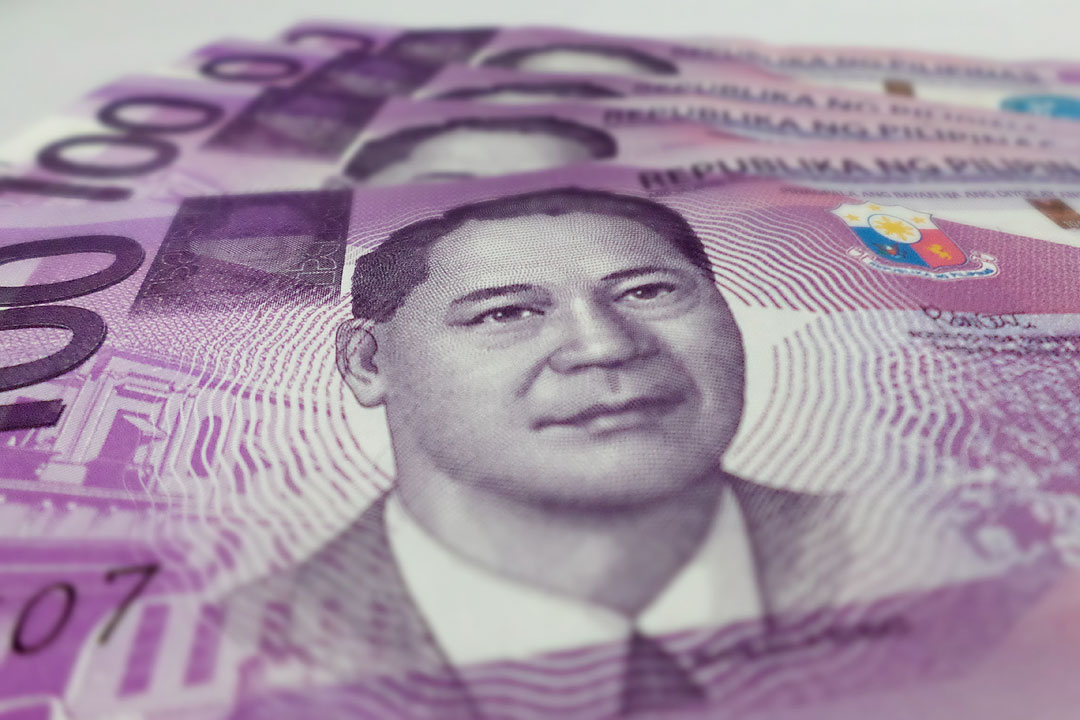




Philippines Trade Update: Exports momentum continues
 DOWNLOAD
DOWNLOAD

Quarterly Economic Growth Release: More BSP cuts to come
 DOWNLOAD
DOWNLOAD

Monthly Economic Update: Fed catches up
 DOWNLOAD
DOWNLOAD


Outstanding debt hits P14.1 trillion

The National Government’s (NG) outstanding debt hit a record PHP 14.1 trillion as of end-May, the Bureau of the Treasury (BTr) said on Tuesday.
Preliminary data from the BTr showed outstanding debt inched up by 1.3% from PHP 13.91 trillion at the end of April, “due to the net issuance of domestic and external debt and the depreciation of the local currency against the US dollar.”
Year on year, the debt stock rose by 12.8% from PHP 12.5 trillion in May 2022. It also jumped by 5.1% from the PHP 13.42 trillion as of end-December 2022.
Of the total debt portfolio, more than half or 68% was from domestic lenders, while the rest was from foreign creditors.
As of end-May, domestic debt reached PHP 9.59 trillion, 10.7% higher than the PHP 8.67 trillion a year ago.
Month on month, domestic debt inched up by 1.4% from PHP 9.46 trillion as of end-April.
Domestic borrowings at the end of May consisted almost entirely of debt securities.
Meanwhile, external debt jumped by 17.7% to PHP 4.51 trillion from PHP 3.83 trillion a year ago. It also edged up by 1.2% from PHP 4.45 trillion in April.
Broken down, foreign debt consisted of PHP 2.47 trillion in global bonds and PHP 2.04 trillion in loans.
As of end-May, the NG’s overall guaranteed obligations fell 0.3% to PHP 379.71 billion from PHP 380.69 billion as of end-April.
Year on year, guaranteed debt declined by 5% from PHP 399.716 billion.
“The decline in guaranteed debt was attributed to the net repayment of external guarantees amounting to PHP 6.70 billion and third-currency adjustments amounting to PHP 0.91 billion. These were mostly offset by the net issuance of domestic guarantees amounting to PHP 4.16 and the impact of local currency depreciation relative to the US dollar amounting to PHP 2.47 billion,” the BTr said.
Rizal Commercial Banking Corp. Chief Economist Michael L. Ricafort said the increase in NG debt was likely due to the weaker peso against the US dollar.
According to the Treasury, the peso depreciated by 1.3% against the greenback to PHP 56.241 as of end-May from PHP 55.497 as of end-April.
This increased the peso equivalent of dollar or foreign currency-denominated borrowings, Mr. Ricafort said.
“The latest net borrowings of the National Government may reflect the need to finance the continued budget deficits in recent months,” he added.
As of end-May, the budget deficit narrowed by 28.86% to PHP 326.3 billion from PHP 458.7 billion in the same period a year ago.
This year, the government set its deficit ceiling at PHP 1.499 trillion, equivalent to 6.1% of gross domestic product.
Mr. Ricafort said elevated inflation led to the increase in government expenditures, while high interest rates added to the government’s debt servicing costs.
For the coming months, Mr. Ricafort said outstanding debt may continue to hit record highs as the government plans more bond offerings.
National Treasurer Rosalia V. de Leon earlier said that the government is planning to launch a retail dollar bond offering in the third quarter, with an offer size of around $2 billion.
The Philippines’ last retail dollar bond sale was in 2021, when it raised almost USD 1.6 billion.
“This is on top of the scheduled issuances of peso-denominated government securities, all of which will help finance the country’s budget deficit for the coming months, though offset by some maturing government securities especially from March-April 2023,” Mr. Ricafort added.
As of end-December, the country’s debt-to-gross domestic product (GDP) ratio stood at 60.9%, improving from the 63.7% ratio as of end-September.
This is lower than the 61.8% target under the medium-term fiscal framework, but still above the 60% threshold considered manageable by multilateral lenders for developing economies.
The government aims to cut the debt-to-GDP ratio to less than 60% by 2025, and further to 51.5% by 2028.
This year, the government’s borrowing plan is set at PHP 2.207 trillion. — Luisa Maria Jacinta C. Jocson
This article originally appeared on bworldonline.com





 By BusinessWorld
By BusinessWorld